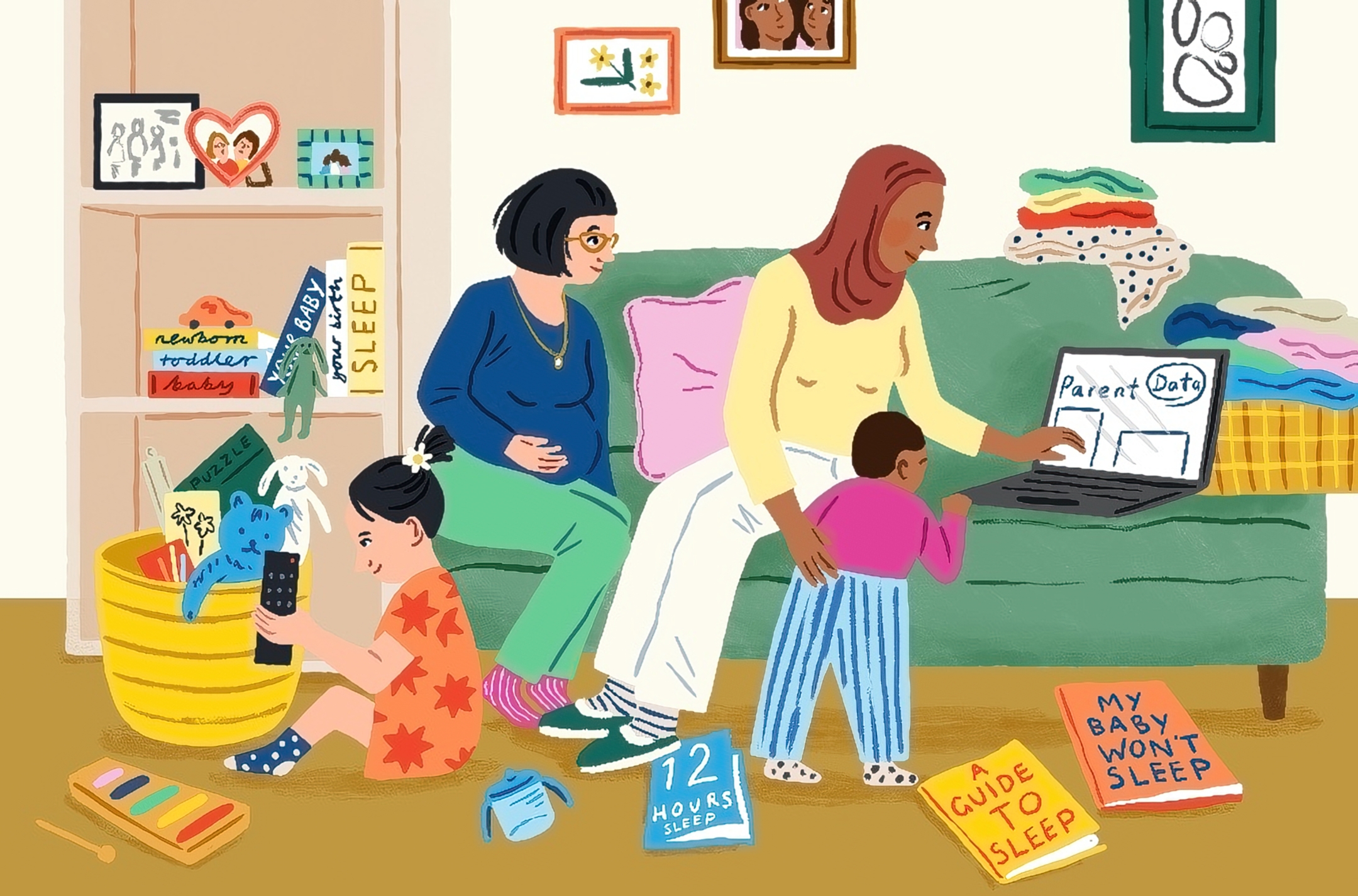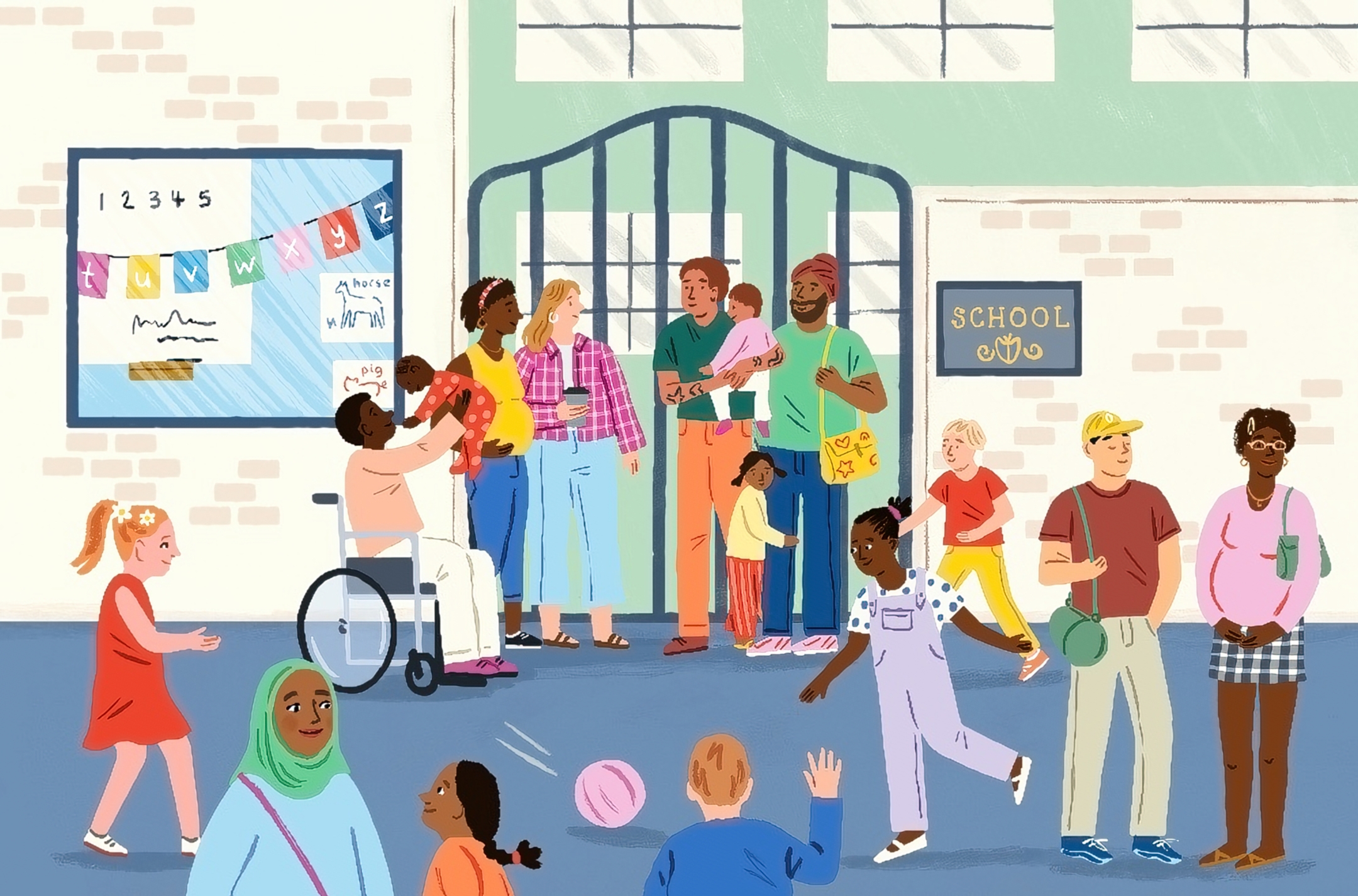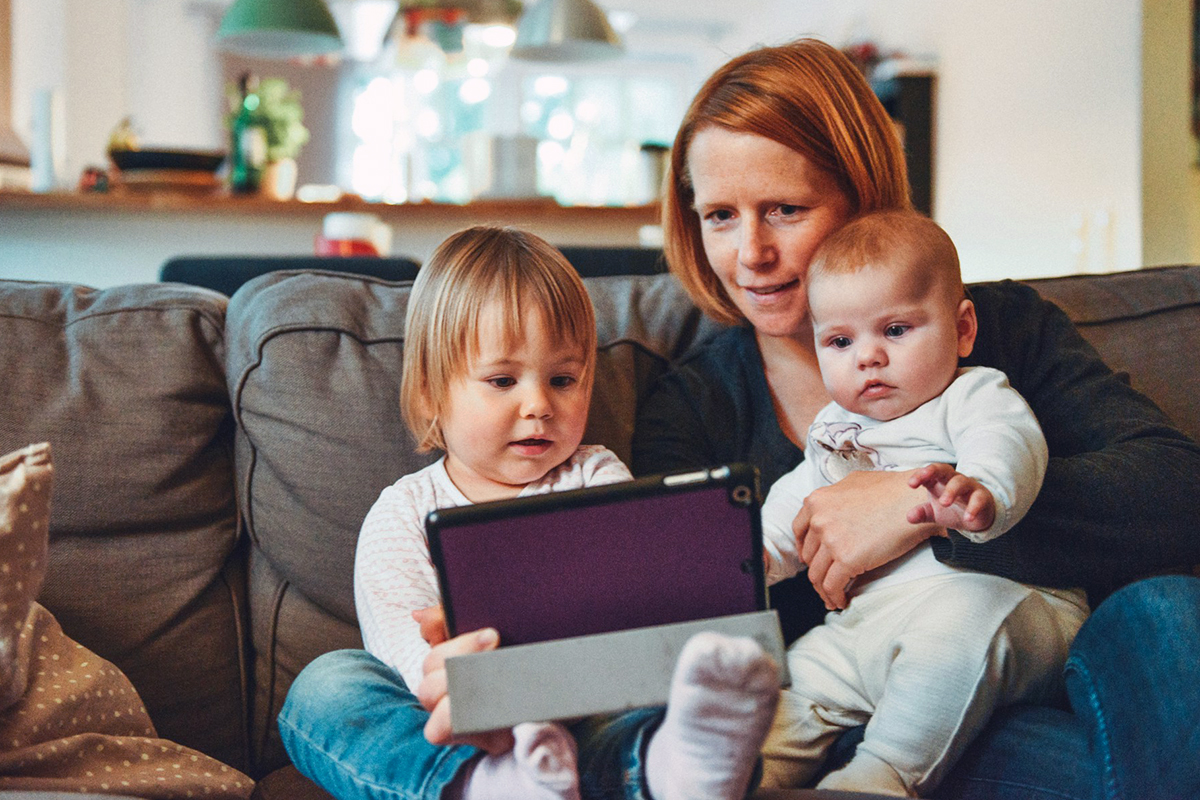All kids misbehave: tantrums, hitting, talking back, not listening, throwing food, shoving their sibling, calling names — all of these behaviors are totally normal parts of being kids. And part of the job of parenting is figuring out how to respond (and how not to respond) in order to limit these behaviors and teach our kids how to become adults who do not throw tantrums and hit people.
Exactly how to do that, however, is not easy. And on social media, there seems to be more advice about what not to do than about what to do. No time-outs, but don’t be too permissive. Listen to your child’s feelings, but don’t get pushed around. Parenting has become too soft. If you are too strict, that’s a lifetime of therapy waiting. It can seem like any choice is doomed to fail.
Parents want guidance about what works. So, what does the data say?
Unfortunately, we do not have as much data directly on discipline as we might like, but one thing we do have that gives a clue is a lot of data on schools. In 2020, an academic review paper was published on the question of what discipline or behavior modification programs work in a classroom setting. In that case, there are a number of interventions that do show significant impacts. Many of these evidence-based programs focus on rewards and consequences (token economies, rewards, time-outs, removal of privileges, and so on).
There is a class of parenting programs that adopt these same approaches — 1-2-3 Magic, Triple P (Positive Parenting Program), Incredible Years — and claim they are effective and evidence-based. Today, I want to talk about these programs and what that claim means.

What does it mean for discipline to be “effective”?
In the world of research, “effective” would mean that there are studies (ideally, randomized ones) that show that the program or intervention has a significant effect on a behavioral outcome.
To argue this, you need at least two things. First, you need to define a specific outcome, ideally, one that isn’t so far in the future that you have retired before you publish your paper on it. Second, you need a defined program to evaluate. You need to be able to say what the treatment group does or is told to do. The more specific and structured the program is, the easier it will be to study.
These issues both limit what we can study. On the outcomes side, when researchers measure them, they focus on things like disciplinary infractions or classroom functioning (for in-school interventions) or parent-reported behavior and family happiness (in-parent interventions). When we say that a program is effective or that it “works,” what we generally mean is that it improves these measures in the medium term (typically over a period of months).
In some cases, proponents of different approaches suggest that the benefit is that children will grow up to be happier, more secure adults (or more successful or some other long-term outcome). This is not really a claim that can be rigorously evaluated, either positively or negatively.
On the second point, the fact that more structured programs are easier to evaluate means that we will see more evidence on programs that are easy to design and implement, especially those that work well across many settings. If you have a program that needs to be individually tailored for each family, that is hard to study easily.
In my view, the evidence is still very interesting despite these limitations, but they are limitations. There are programs that we are unlikely to see rigorously evaluated, and one may say that it’s unfair to conclude that one program is evidence-based just because it’s the only one you can get randomized trial data for. Beyond this, some parents may say that the outcomes here are not ones they are interested in — your main goal may not be to get your children to listen to you and do what you say, which is fine!
However, I do think there are parents for whom this is a goal and who would like to at least be aware of the evidence base. So, let’s turn to that.
Which discipline approaches are evidence-based?
There are a number of programs that take an evidence-based approach to discipline, some of which are mentioned above (1-2-3 Magic, Triple P, and Incredible Years). Many schools — including those that have children with serious behavioral issues — use a program called Positive Behavioral Interventions and Supports, which has a similar set of goals and structures.
Broadly, all of these programs emphasize a few key elements.
1. Recognize that children are not adults.
Given that, you usually cannot improve their behavior with a discussion or reasoning. Their brains are not fully formed, and they sometimes do very irrational stuff.
With this in mind, these approaches emphasize trying not to get angry. Don’t yell, don’t escalate, and don’t hit. In most of these programs, controlling parental anger and emotions is a big part of the intervention. (This is hard!)
For the most part, these interventions are light on talking and explanations. They tend to focus on changing behaviors rather than talking about why the behavior happened. Kids may simply not know why they did something the way an adult might.
2. Set up a clear system of rewards and consequences.
For example, 1-2-3 Magic develops a system of counting (to three, obviously) in the face of disruptive behavior, and if three is reached, there is a defined consequence (a time-out, loss of a privilege, etc.).
Many of these programs use time-outs, which have been maligned in recent years. Time-outs are one of the most widely studied evidence-based components of these interventions, and there is no evidence that they are harmful. However, if time-outs are not for you, you could consider other consequences.
3. Be consistent.
Whatever system you use, you use it every time. If the consequence of counting to three is a time-out, then there needs to be a time-out every time. If you say no, you need to stick to no. If you say no to dessert and then your child whines and you give in, they learn that whining works. If you say you are going to stop the car if the kids keep fighting, you need to be ready to stop the car (safely!).
These are the broad parameters. The specifics differ across programs. If you are hoping to use this kind of discipline, you’ll probably want to pick a particular program and stick to it. One may not be better than the other, but given the importance of consistency, it is necessary to adopt one approach among everyone who is with your kid, not five similar but not identical approaches. The target age for these programs is typically 2 to 12.
How do we know these approaches work?
The evidence that these are effective is based on a number of randomized controlled trials.
To give an example, a paper published in 2003 in the Journal of the American Academy of Child and Adolescent Psychiatry reported on an evaluation of 1-2-3 Magic among 222 families. All the parents involved were looking for help managing their children’s behavior, although none of the children had clinical behavior problems. That is to say, they were just engaging in the standard difficult behaviors.
The intervention was fairly light — parents attended three two-hour meetings that discussed the 1-2-3 Magic approach and were shown videos and given handouts about particular problem issues. There was a fourth two-hour meeting a month later to reinforce the concepts.
The experimental group — the one that got the intervention — had improvements on all the variables measured. The parents scored better on measures of parenting, i.e., “Are you hostile and angry toward your child?” and the children scored better on a variety of measurements of behavior. Moreover, the parents reported that their children were better behaved and more compliant and that the parents’ stress had gone down. The authors noted that the effect sizes were not enormous — it would be hard to expect huge effects, given how limited the intervention was — but they were large enough for parents to notice them and have them affect their time with their children.
Smaller trials of 1-2-3 Magic with longer follow-ups have shown similar impacts, with the authors arguing that the effects of these programs can be seen even two years later. The evidence isn’t limited to this particular program. A number of studies, especially in the U.K. and Ireland, have seen similar impacts with the Incredible Years approach. The results there show improvements in parenting practices, reductions in child behavior problems, and lower parental stress. Reviews that pull together evidence on all programs of this type show similarly consistent findings across studies.
The upshot is that we do have evidence that the programs are effective in the sense defined above.
Is there an approach that is the “best”?
Of the named programs above, the specific one I get the most questions about is 1-2-3 Magic.
It was developed by clinical psychologist Tom Phalen and popularized in a book and video series. The book, the best way into it, has sold millions of copies. The three core elements of the program are (1) an approach to negative behaviors, involving counting and consequences, (2) a suite of ideas about reinforcing positive behaviors, and (3) a focus on relationship building.
The emphasis in the book is on making this easy. It’s essentially a cookbook for parenting (this is not meant in a negative way). My sense is that part of the success of the program is that it’s easy to follow. Like with any cookbook, you might want to modify it a bit. But if you do, go back to the principles: whatever modifications you do, plan them out, and be consistent.
Closing thoughts
The approach to discipline you use in your house is a personal choice, and for some parents, the approaches outlined above may not sound right. (I will say, if you are currently using spanking, I would urge you to consider an alternative. The evidence on corporal punishment shows little effectiveness and some evidence that it worsens outcomes. Another type of approach, like the ones above, can be a doable alternative.)
If these don’t sound good, don’t do them. But I would suggest, if you’ve read this far, that you consider using this as a moment to think about what approach you are going to use. The data is very clear that picking a consistent way to approach behavior, and one that you agree on with your partner, is likely to make things a lot smoother. That approach might be one that involves more talking, scripts, and in-the-moment boundary setting.
The uniting factor among all of these approaches is consistency. Deciding on an approach, or some combination of approaches, and sticking with it is key.
And a final note: if you are finding discipline overwhelming, or you think the behaviors you are seeing in your child are out of the ordinary, it is worthwhile to seek professional help. Your pediatrician can help you find a child psychologist who can work with your child and your family as a whole. There are evidence-based interventions beyond what I have discussed here that may be helpful, but a professional should supervise them. Don’t struggle alone!
The bottom line
- It’s difficult to study the effectiveness of parenting approaches, and as a result, there isn’t much data on discipline. More structured programs are easier to evaluate, which means there is more evidence on programs that are easy to design and implement.
- Broadly, evidence-based programs that are considered the most effective consist of not reasoning with a child as if they are an adult and setting up a clear (and consistent) system of rewards and consequences. Often, this includes time-outs.
- The evidence for corporal punishment (such as spanking) shows little effectiveness and that it can even worsen outcomes.
- Seek support from a pediatrician if you are struggling with discipline or your child’s behavior. You don’t have to figure it out alone.















Log in
We started using 123 Magic about 10 years ago when my older kid was one. We picked it because my husband and I could actually agree on it, and it focused on parents managing their own reactions to their kids’ behavior. That felt important to us.
We’ve used it pretty consistently with both of our kids. Funny enough, the person who recommended it to us gave up on it when their kid hit elementary school, but for us it’s held up as a helpful framework.
Both of my kids are neurodiverse, so working with their different neurotypes has been interesting. My older one is more of a rule follower and responds well to the structure. The younger one is less impressed by consequences and likes to test limits.
They’re both in therapy to support them with their inherent mental health challenges. I’ll never forget when their psychologist said they had never seen a 123 Magic moment work so clearly and effectively. That felt really validating.
For us, consistency has made all the difference. I’m not a proponent who says it’s this method is the best. I’ve read many other books and see the benefits of different styles if they are implemented consistently.
Do any of the studies take into account the child’s growth? Since the studies evaluate some behaviour after some weeks/months/years, could results be partly explained by the child’s normal growth and development after that time?
It seems important to me that the child understand the reasoning. In school mine got “smileys” (dollar store trinkets) one year and now “class dojos” for good behavior. Every single time he tells me proudly that he got more points, and I ask him what he did, and he has NO IDEA. He just knows that at some point in the last week or two he did something the teacher approved of.
This is actually the first time where I’m specifically diverging from my parents’ parenting methods and going with a book method (I’m trying 123 Magic), so I’m glad there’s evidence to back it up. I was spanked for discipline as a kid, and while I don’t think of it as abuse, I’ve also seen the studies showing the more negative outcomes of kids who were spanked as adults, and I recognize some of my more negative personality traits there, which is why I feel the need to try something else. I just hope it actually works.
Dr. Oster, I would so love to discuss your review of the literature with you. I am a child and adolescent therapist and could point you to many peer reviewed RCT studies discussing the efficacy of additional approaches such as PCIT and PMT. Are those missing from your review because they are clinical interventions and not guidelines for general parenting? There are really great, tangible strategies from each of these approaches that are feasible, effective, and recommended for overall parenting. If you’re interested in discussing, I’d love to share a trove of literature with you about this as there is so much information about discipline that is widely spread and could use your scientific lens and support behind it! My email is drsarahtannenbaum@gmail.com. Would love to connect.
This was so timely as my 22-month-old recently started testing boundaries and specifically does not listen to me. This makes for a challenging dynamic. I will be picking up 1-2-3 Magic from the library today and hope we can implement and stick with some of the suggestions. Thank you!
Glad you’re directly identifying to us parents that children need to understand their choices have consequences (not just rewards). This gets lost quite often in the messaging. There are real consequences for the rest of society if we don’t get this lesson across. This is a big part of why people in their 20s tend to be so coddled and incapable of learning from their choices as adults.
I am not a person in my twenties, and far from it actually, but that statement was definitely not evidence-based and sounds like an old person grumbling about the youth. I’m not sure what generation you belong to, but I hated when Millennials were generalized about and judged, and could not relate to those stereotypes at all. We should do better for successive generations.
This was a great write-up, thank you. Just a note that all of these programs place a huge emphasis on rewarding and giving positive attention to good behavior (something they have in common with most ‘gentle parenting’ approaches). One more: a big limitation of the data on these programs for this readership is the sample. The research is all on parents who are seeking guidance for disruptive behavior, and their children are not necessarily the same as children who don’t have those presenting concerns. For example, a serious talking to/explanation might be anxiety provoking for a child with an average or anxious temperament, who might not do that particular thing again, but not have any effect on a kid who is a little more impulsive and/or less anxious. So glad to see 1-2-3 Magic, Triple P, and Incredible Years getting some more attention.